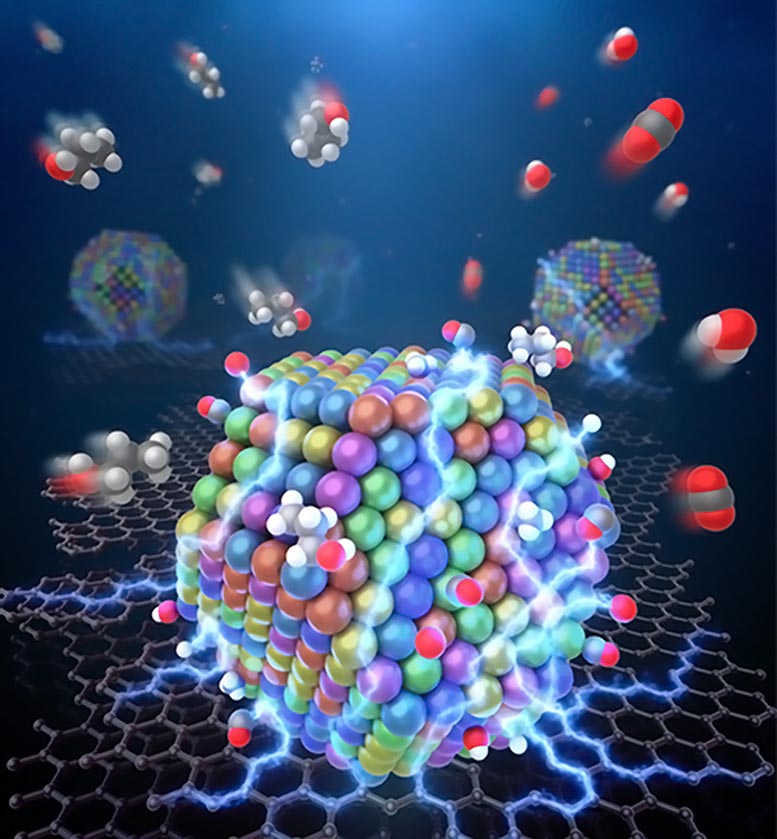
Beginning with the Bronze Age, metal alloys have changed civilizations. The latest alloy iteration is nanosized high-entropy alloys, or HEA. In the Journal of American Chemical Society, Kyoto University researchers, in cooperation with multiple institutes across Japan, report the first ever HEA consisting of all six platinum group metals, known as PGM-HEA, and show that it electrochemically catalyzes ethanol oxidation reactions with unprecedented efficiency.
HEA are a relatively new structure only first reported in 2004. They provide extraordinary structural and functional properties, but are unexplored due to their recent.
One factor that instills these unique features is their constituents. Whereas simpler alloys like brass can be made of as few as two metals, HEA must have at least five elements at near equiatomic concentrations. The result is higher entropy and thus attractive yet only theoretically established properties.
Chemists, on the other hand, have a far better grasp of PGM, which are used in the manufacturing of 25% of all goods. Although the six elements are all in the same group, each can catalyze distinctive reactions, and when mixed together are expected to provide a diverse array of adsorptions sites for a reaction.
Indeed, to test its usefulness, PGM-HEA was applied to electrochemical ethanol oxidation reactions, which are used for portable power applications ranging from smartphones to forklifts. The electron transfer process that occurs in EOR is complex and benefits from a variety of adsorption sites, something that conventional catalysts cannot provide.
In contrast to these simpler catalysts, X-ray photoelectron spectroscopy revealed that each element was on the surface of the PGM-HEA, offering a variety of adsorption sites for the reaction. Confirming the significance of this structure, PGM-HEA outperformed all commercial catalysts tested.
To understand the importance of each of the six PGM elements, comparable structures with 3-5 PGM were made. Experiments suggested the having all six PGM was critical, as the PGM-HEA caused the individual elements to have a synergistic effect that came from an optimal surface configuration of adsorption sites for the electron transfer process.
The higher catalytic performance could provide a new strategy for higher fuel efficiency.
Reference: “Platinum-Group-Metal High-Entropy-Alloy Nanoparticles” by Dongshuang Wu, Kohei Kusada, Tomokazu Yamamoto, Takaaki Toriyama, Syo Matsumura, Shogo Kawaguchi, Yoshiki Kubota and Hiroshi Kitagawa, 29 July 2020, Journal of the American Chemical Society.
DOI: 10.1021/jacs.0c04807
Never miss a breakthrough: Join the SciTechDaily newsletter.